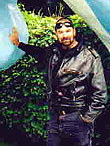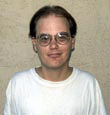|
|
This topic comprises 2 pages: 1 2
|
|
Author
|
Topic: Mono Surround Sound?
|
Paul Turner
Expert Film Handler

Posts: 115
From: Corvallis, OR, USA
Registered: Apr 2001
|
 posted 04-17-2001 02:37 PM
posted 04-17-2001 02:37 PM




I did a Film Tech search and found nothing, so maybe I didnít see it here. Somewhere there was a discussion about mono surround sound systems. Iím running mono now and am looking into twinning the theater soon, so I donít wanna invest in a digital surround system just to have to reinstall it later. However, my auditorium sound could use some help to conquer bad acoustics, so I was considering putting in surround sound system with the mono (if that's possible). Was wondering if anyone could comment on:-what equipment would be necessary to go mono surround from a mono behind-the-screen system? -is there a system that can be used when I go digital? I know that a delay of about 1 ms per foot is needed on the surround speakers, so Iím hoping thereís a simple way to do it. While Iím at it, Iím hoping thereís a million bucks in my account . . . . Any input would be appreciated.
| IP: Logged
|
|
|
|
|
|
|
|
|
|
Steve Guttag
We forgot the crackers Gromit!!!

Posts: 12814
From: Annapolis, MD
Registered: Dec 1999
|
 posted 04-17-2001 10:28 PM
posted 04-17-2001 10:28 PM




Gord:The CP-65 can easily do Center-Surround or as it is more aptly named here...mono-surround. A pair of jumper wires are placed on the Cat. 242 to sum L, C and R to a common output. You can also make the CP-65 do a L, R and Surround (handy for small rear screen projection). Steve ------------------
"Old projectionists never die, they just changeover!"
| IP: Logged
|
|
|
|
|
|
|
|
Steve Guttag
We forgot the crackers Gromit!!!

Posts: 12814
From: Annapolis, MD
Registered: Dec 1999
|
 posted 04-18-2001 09:37 PM
posted 04-18-2001 09:37 PM




Gord,Please explain the "gain riding artifacts". Personally, I never recommend mono-surround. Or 3-channel mono (but that is yet another thread  ) ) Steve ------------------
"Old projectionists never die, they just changeover!"
| IP: Logged
|
|
|
|
|
|
John Pytlak
Film God

Posts: 9987
From: Rochester, NY 14650-1922
Registered: Jan 2000
|
 posted 04-18-2001 11:13 PM
posted 04-18-2001 11:13 PM





Danny, here is a link to Dolby technical information, including surround sound:
http://www.dolby.com/tech/#head2 Here's Perry Sun's Movie Sound Page:
http://www.moviesoundpage.com And Marty Hart's American Widescreen Museum:
http://www.widescreenmuseum.com/sound/sound01.htm Plus some information on the Kodak website:
http://www.kodak.com/country/US/en/motion/programs/student/handbook/recording1.shtml (Ron Uhlig of Kodak first developed and demonstrated stereo variable area tracks using Dolby noise reduction, and was very instrumental in developing Cinema Digital Sound (CDS), the FIRST system to record digital sound on the print.) ------------------
John P. Pytlak, Senior Technical Specialist
Worldwide Technical Services, Entertainment Imaging
Eastman Kodak Company
Research Labs, Building 69, Room 7419
Rochester, New York, 14650-1922 USA
Tel: 716-477-5325 Cell: 716-781-4036 Fax: 716-722-7243
E-Mail: john.pytlak@kodak.com
Web site: http://www.kodak.com/go/motion
| IP: Logged
|
|
Joe Schmidt
Expert Film Handler
Posts: 172
From: Billings, Montana, USA
Registered: Apr 2001
|
 posted 04-19-2001 12:15 PM
posted 04-19-2001 12:15 PM




Well, here's another old sneaky trick which can work quite well, but you cannot appreciate how well unless you've actually been involved in some way with the "doing."This might get me Scolded again but I'll risk it. How many here have seen "How to Steal A Million?" This had a mono track. If you switch in the surrounds every time the burglar alarm in the museum goes off, you'll have a marvelous effect, and very cheap too!
A routine everyday use of the surrounds will be to switch them in for main title and ending music. This has been automated in the past and at one time Century produced a little system for doing it, but in all cases you have to cue the prints manually. Besides having a button at each projector for surrounds on/off, one method is to add a scanning device to constantly read between the sprocket holes. The "ON" signal is two drops of india ink a certain number of sprocket holes apart, such as five, and "OFF" is just one drop. This helps to maintain OFF as the default so that an occasionally anomaly such as a bit of dirt or a splice won't accidentally trip the surrounds on when not wanted. The associated logic circuitry searches continuously for a correct ON signal, when read it closes a relay to switch on the surrounds, then watches for the OFF signal. This can be a lot of fun. Of course you don't need it with current product today as surround activity is all built in with the sound recording, and so we wouldn't bother.
| IP: Logged
|
|
|
|
|
|
All times are Central (GMT -6:00)
|
This topic comprises 2 pages: 1 2
|
Powered by Infopop Corporation
UBB.classicTM
6.3.1.2
The Film-Tech Forums are designed for various members related to the cinema industry to express their opinions, viewpoints and testimonials on various products, services and events based upon speculation, personal knowledge and factual information through use, therefore all views represented here allow no liability upon the publishers of this web site and the owners of said views assume no liability for any ill will resulting from these postings. The posts made here are for educational as well as entertainment purposes and as such anyone viewing this portion of the website must accept these views as statements of the author of that opinion
and agrees to release the authors from any and all liability.
|

 Home
Home
 Products
Products
 Store
Store
 Forum
Forum
 Warehouse
Warehouse
 Contact Us
Contact Us




 Printer-friendly view of this topic
Printer-friendly view of this topic






 . Dolby CP45 though I am not sure if it has Cat 64 cards or if everything in it is all Digital. Ultra Stereo you can get the DSP 60 everything on it is done in the Digital domain,
. Dolby CP45 though I am not sure if it has Cat 64 cards or if everything in it is all Digital. Ultra Stereo you can get the DSP 60 everything on it is done in the Digital domain,  or a JS 223 or 230 model comes with only the cards to do Center and Surrounds (230) or Center split Surrounds (223).
or a JS 223 or 230 model comes with only the cards to do Center and Surrounds (230) or Center split Surrounds (223). 




 )
)




